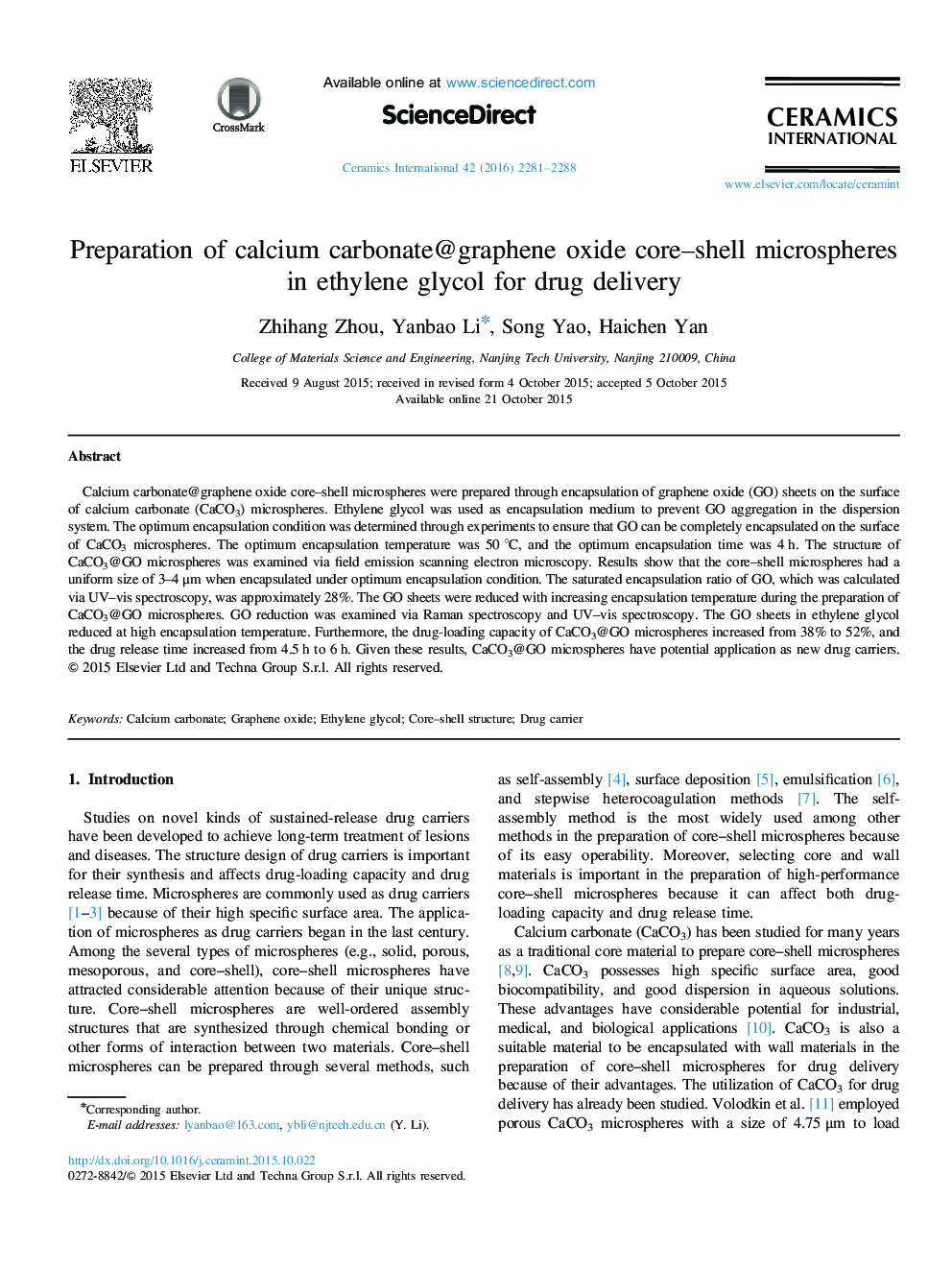| Article ID | Journal | Published Year | Pages | File Type |
|---|---|---|---|---|
| 1458915 | Ceramics International | 2016 | 8 Pages |
Calcium carbonate@graphene oxide core–shell microspheres were prepared through encapsulation of graphene oxide (GO) sheets on the surface of calcium carbonate (CaCO3) microspheres. Ethylene glycol was used as encapsulation medium to prevent GO aggregation in the dispersion system. The optimum encapsulation condition was determined through experiments to ensure that GO can be completely encapsulated on the surface of CaCO3 microspheres. The optimum encapsulation temperature was 50 °C, and the optimum encapsulation time was 4 h. The structure of CaCO3@GO microspheres was examined via field emission scanning electron microscopy. Results show that the core–shell microspheres had a uniform size of 3–4 μm when encapsulated under optimum encapsulation condition. The saturated encapsulation ratio of GO, which was calculated via UV–vis spectroscopy, was approximately 28%. The GO sheets were reduced with increasing encapsulation temperature during the preparation of CaCO3@GO microspheres. GO reduction was examined via Raman spectroscopy and UV–vis spectroscopy. The GO sheets in ethylene glycol reduced at high encapsulation temperature. Furthermore, the drug-loading capacity of CaCO3@GO microspheres increased from 38% to 52%, and the drug release time increased from 4.5 h to 6 h. Given these results, CaCO3@GO microspheres have potential application as new drug carriers.
